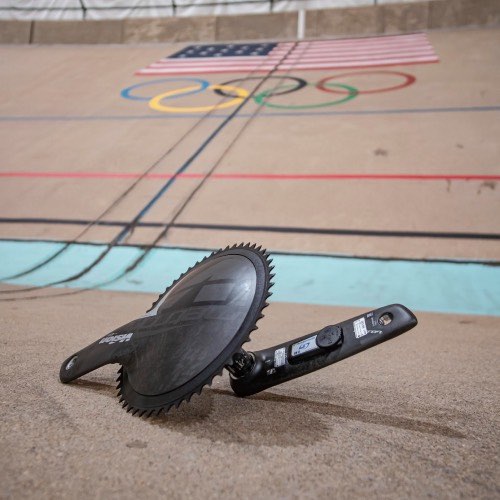Innovation & Disruption | The Stages Cycling Story
- By Amber Jaworsky
- Published: Jul 7, 2022
- Last Updated: Jul 7, 2022

How It All Started
Cycling has been Stages’ paramount focus from the beginning. Long before they were Stage’s engineers, innovators, or business leaders, our core team members were avid cyclists. They valued the benefits of power and envisioned a way to make power accessible for every rider. At the time, most of the team worked for another company in the fitness industry, but they pooled their talent and collectively decided to take the risk to create the Stages Cycling brand.


Disrupting An Industry
With a dream in hand, the team of five boldly stepped into an industry that was ripe for innovation. Early power meters were cost-prohibitive (costing close to $3,000) and difficult to use. They had trouble compensating for temperature fluctuations, were challenging to install, and required additional sensors and components. Despite their drawbacks, they produced a gold mine of information that every cyclist could benefit from, like the ability to analyze a ride and quantify improvement over time. So, Stages challenged the norm and set out to create a product that was accessible, affordable, and easy to install.
The relatively quiet indoor cycling category became their test kitchen, and another fitness company contracted Stages to create a power meter for indoor bikes. Up until that point, indoor bikes were only able to measure miles, speed, and time. This was just enough data to pique the interest of riders but was not enough information to accurately measure the impact of their workouts. The addition of to completely disrupted the indoor cycling category. Gone were the boring days of pedaling and going nowhere, power metrics suddenly provided cyclists with real-time data that quantified their effort and helped measure fitness improvements. The new trend was electrifying and it created a new subgroup in cycling as outdoor riders started to view indoor cycling as a bona fide training tool.
Bringing Power To Every Rider


The effects of power on the indoor sector fueled the expansion of power to the outdoor category. A steel-clad power meter (weighing in at 2 pounds) was a successful starting point, but the team continued to push to create a product that was light and accessible for every type of rider. Their research indicated that the best location to add power to a bike, from a usability, ease of installation, and maintenance standpoint was the left crank arm.
Left-only crank-based power meters are universally compatible. A rider can add power to any and all of their bikes by simply replacing their current left side crank arm with a power-equipped arm. Left side power meters collect power measurements from the left leg only, and then double the data to derive the total power output. The accuracy and dependability of this measurement were immediately put to the test as BMX riders, mountain bikers, and pro tour athletes added Stages Power meters to their bikes.


Early outdoor partners, including Team Sky (now known as Team Ineos), provided Stages with an abundance of valuable feedback and data that validated the accuracy of left-side power meters. Ten years of relentless testing later, Stages Power meters have been proven at every elite level of cycling, including five Tour de France wins, eight Grand Tour wins, and seventy-two national titles.
No other power meter is as tested, or as trusted, as Stages.
Knowledge Is Power
Over the past 10 years, the Stages Power meter has continued to leave its mark across all cycling categories. You’re familiar with the phrase “knowledge is power” but at Stages, we believe Power is Knowledge. Using a gives indoor and outdoor cyclists the knowledge they need to improve, accomplish their goals, and get the most out of their rides. It’s the primary tool that produces cycling data and analytics, and it’s made a lasting impression around the world in the most popular health clubs and boutique studios. If you visit a Life Time Fitness, David Lloyd Club, Equinox, Soul Cycle, or Cycle Bar studio, you will have the opportunity to take a Stages indoor bike and Stages Power meter for a ride. This winning combination will not only ensure that you get the most out of your indoor workout, but it will also provide you with a brilliant perspective of what your body can do.
Power is knowledge at Stages and power meters inform and dictate the new technology we create. Each new product launched since the Stages Power meter, including and smart bikes, was designed with power top of mind. This philosophy is why the SB20 comes equipped with Stages dual-sided power, and why Dash has a super bright color screen with a color wheel to indicate your power zones. We’ve continued to add power to new drivetrains and crank arms, including the new Dura-Ace 9200 and Ultegra 8100.
Power also informs innovation for new technology for indoor studios, like real-time group display, behind-the-scenes data collection, and post-workout emails. And, we’re not done yet! Stay tuned for our next blog to learn more about how power continues to lead the way at Stages Cycling.
Want To Learn More About Our Story?
Listen in as Doug Crawford, OG Core Team Member & Current Senior Vice President of Operations & Business Development, shares the Stages Cycling Story below.


















